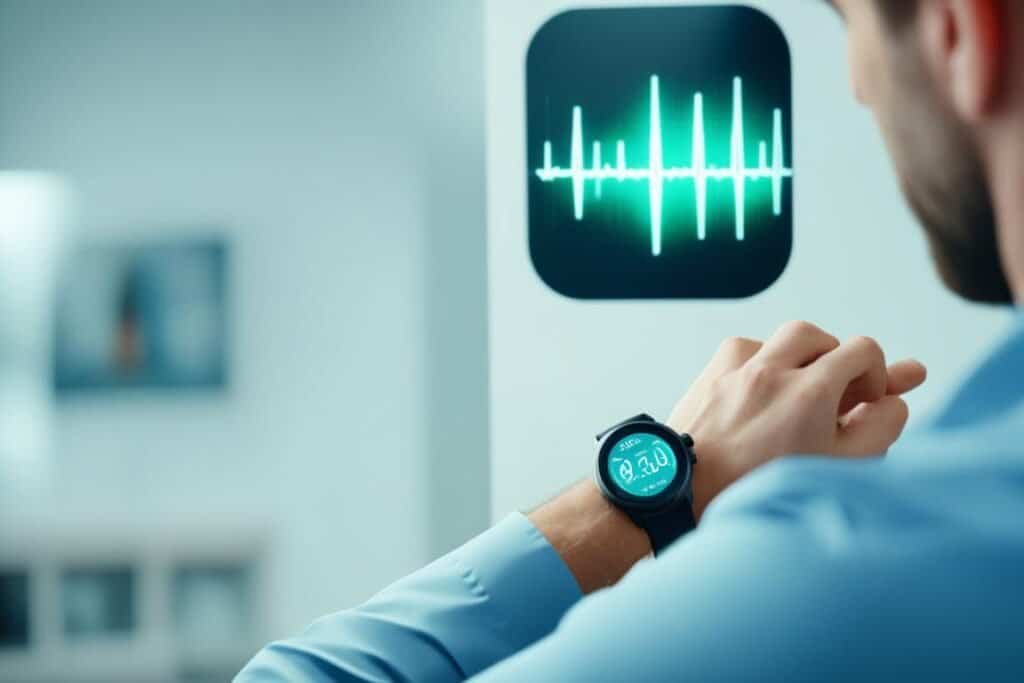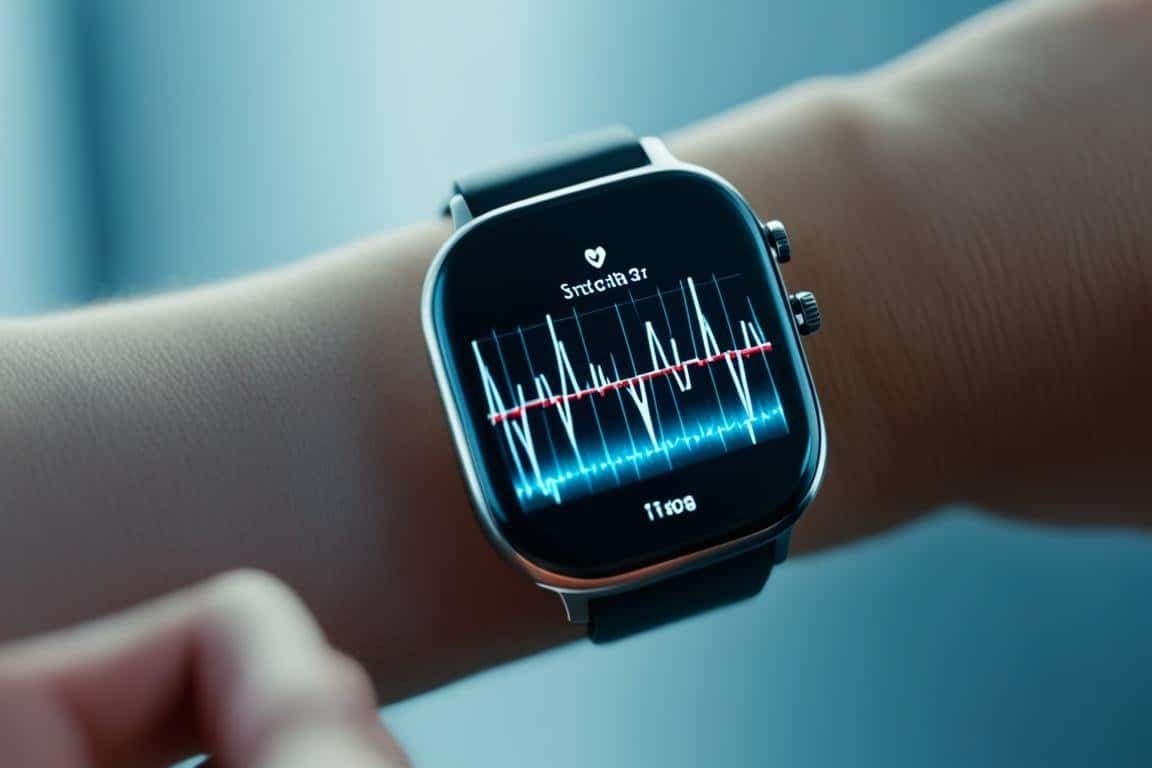Smartwatches have become an essential part of our lives, keeping us connected and informed. But did you know that some smartwatches are capable of doing more than just delivering notifications? They can also provide valuable insights into our health, including our heart’s electrical activity. In this article, we will explore the world of smartwatch ECG readings and their accuracy. Whether you’re a fitness enthusiast or someone looking to monitor your heart health, this information will be invaluable to you.
Smartwatches such as the Apple Watch, Withings, and Samsung smartwatches have the ability to record and transmit a single-lead electrocardiogram (ECG). These ECG readings are essentially equivalent to lead I of a 12-lead ECG. They can provide valuable information about your heart rate, cardiac conduction, and rhythm. Moreover, some smartwatch applications can automatically diagnose atrial fibrillation, a common arrhythmia. Despite their many benefits, it’s important to note that smartwatch ECGs have their limitations, especially when it comes to diagnosing patients with co-existing ECG abnormalities. However, researchers are increasingly exploring the potential of using smartwatch ECGs to detect other cardiac symptoms and anomalies associated with sudden cardiac death.
Key Takeaways:
- Smartwatches such as the Apple Watch and Samsung smartwatches can record single-lead ECGs, equivalent to lead I of a 12-lead ECG.
- Smartwatch ECGs can provide information about heart rate, cardiac conduction, and rhythm.
- Some smartwatch applications can automatically diagnose atrial fibrillation.
- Smartwatch ECGs have limitations in diagnosing patients with co-existing ECG abnormalities.
- There is increasing interest in using smartwatch ECGs to detect other cardiac symptoms and anomalies associated with sudden cardiac death.
The Benefits of Smartwatch ECG Monitoring
Smartwatches with ECG functionality offer numerous advantages for cardiac monitoring. These wearable ECG devices provide a convenient and portable way to monitor your heart health on-the-go, allowing you to keep track of your cardiovascular well-being wherever you are.
The ECG functionality in smartwatches enables you to detect atrial fibrillation, a common arrhythmia that is associated with an increased risk of stroke. By monitoring your heart’s electrical activity, these smartwatches can help you identify irregularities in your heart rhythm and seek appropriate medical attention promptly.
In addition to detecting atrial fibrillation, smartwatch ECGs can be used to monitor other cardiac symptoms, such as chest pain. The continuous ECG monitoring feature allows you to capture data during episodes of discomfort and share it with your healthcare provider for evaluation.
Smartwatch ECGs also play a crucial role in detecting anomalies associated with sudden cardiac death, providing an early warning system for potential life-threatening events. The ability to record and transmit ECG readings in real-time allows for timely diagnosis and appropriate medical intervention, potentially saving lives.
However, it’s important to note that while smartwatch ECGs offer significant benefits, they have limitations. They should not replace a full 12-lead ECG conducted by healthcare professionals for comprehensive cardiac assessment. Smartwatch ECG monitoring should be used in conjunction with medical advice and professional interpretation to ensure accurate and comprehensive evaluation of your heart health.
Stay Informed and Empowered
By leveraging the ECG functionality in smartwatches, you can actively participate in monitoring your heart health, staying informed about any irregularities, and seeking timely medical intervention when necessary. Remember, knowledge and proactive actions can make a significant difference in maintaining your cardiovascular well-being.
Accuracy of Smartwatch ECGs
When it comes to the accuracy of smartwatch ECGs, studies have shown that these devices are generally reliable in detecting atrial fibrillation. The single-lead ECG recorded by smartwatches can provide valuable information about heart rhythm and conduction.
Comparisons with standard 12-lead ECGs have revealed that the limb leads (I, II, and III) of smartwatch ECGs provide equivalent readings, while the precordial leads (V1 to V6) are very similar. This means that smartwatches can capture precordial lead electrocardiogram recordings, which are crucial for detecting various cardiac disorders and arrhythmias.
However, it’s important to note that while smartwatch ECGs are accurate in many cases, they may not be as comprehensive as a full 12-lead ECG. As with any medical device, there are limitations to consider. Therefore, it’s always recommended to consult with a healthcare professional for a thorough assessment and interpretation of ECG results.
To understand the accuracy of smartwatch ECGs better, let’s take a look at a comparative table:
| Smartwatch ECG | 12-Lead ECG |
|---|---|
| Limb Leads (I, II, III) | Limb Leads (I, II, III) |
| Precordial Leads (V1 to V6) | Precordial Leads (V1 to V6) |
| Accurate in detecting atrial fibrillation | Accurate in detecting atrial fibrillation |
| Provides reliable information about heart rhythm and conduction | Provides comprehensive information about heart rhythm and conduction |
| May not detect all abnormalities compared to a full 12-lead ECG | Detects a wide range of cardiac abnormalities |

This table provides a clear overview of the similarities and differences between smartwatch ECGs and 12-lead ECGs. While smartwatches can provide valuable insights into heart health, it’s crucial to remember that they are not intended to replace comprehensive cardiac assessments performed by healthcare professionals.
The Potential Clinical Applications of Smartwatch ECGs
In addition to detecting atrial fibrillation, smartwatch ECGs have the potential to be used for various clinical applications. They can help in the detection of ischemia, bradycardia, drug-induced changes, and anomalies associated with sudden cardiac death. Smartwatches with multiple leads can provide a more comprehensive view of the heart’s electrical activity and aid in the diagnosis of various cardiac conditions. Recording ECGs with smartwatches can facilitate early recognition of ST-elevation myocardial infarction (STEMI) and shorten the time to diagnosis. However, the use of smartwatch ECGs in the out-of-hospital management of chest pain is limited by the need for multiple leads and limitations in detecting abnormalities in a single lead.

Smartwatch ECGs have the potential to revolutionize cardiac monitoring by providing a portable and convenient way to monitor heart health. By utilizing multiple leads, these smartwatches can offer a more comprehensive assessment and aid in the diagnosis of various cardiac conditions. The ability to detect ischemia, bradycardia, and other abnormalities associated with sudden cardiac death can help in timely intervention and potentially save lives.
However, it’s important to acknowledge that the use of smartwatch ECGs has certain limitations, particularly in the out-of-hospital management of chest pain. The need for multiple leads and the potential challenges in detecting abnormalities in a single lead can impact the accuracy of the readings. Therefore, smartwatch ECGs should be used in conjunction with medical advice and professional interpretation, and should not replace a full 12-lead ECG for comprehensive cardiac assessment.
Limitations of Smartwatch ECGs
While smartwatch ECGs offer convenience and portability, it’s important to be aware of their limitations. The use of a single-lead ECG in smartwatches may not provide a comprehensive view of the heart’s electrical activity compared to a full 12-lead ECG. This means that certain abnormalities or conditions may not be detectable with a smartwatch ECG alone.
The accuracy of smartwatch ECGs can also be influenced by various factors. High heart rate, electrical noise, and the small size of the signal can affect the reliability of the readings. It’s essential to be mindful of these factors when interpreting the results obtained from a smartwatch ECG.
Another limitation is that smartwatches require the user to actively initiate a recording. This means that unconscious patients or individuals experiencing short-lasting bradycardia may not be able to benefit from smartwatch ECG monitoring. In these cases, alternative monitoring methods or medical assistance should be sought.
It’s important to note that smartwatch ECGs should not be solely relied upon for the diagnosis of serious cardiovascular conditions. They should be used in conjunction with medical advice and professional interpretation. Consultation with a healthcare provider is crucial for accurate diagnosis and appropriate treatment.
However, despite these limitations, smartwatch ECGs can still be a valuable tool for monitoring heart health on-the-go. When used in combination with other diagnostic methods, they can provide valuable insights and help individuals take proactive steps towards maintaining a healthy heart.
To learn more about the limitations of smartwatch ECGs, consult the following resources:
- Article: “The limitations of smartwatch ECGs: What you need to know” – available at the American Heart Association website.
- Study: “Accuracy of smartwatch ECG in detecting cardiac abnormalities” – published in the Journal of Cardiology.
- Book: “Understanding Smartwatch ECGs: A Comprehensive Guide” – authored by Dr. Jane Thomas, a renowned cardiologist.
Remember, smartwatch ECGs are a convenient tool, but they should not replace professional medical advice. Always consult a healthcare professional for accurate diagnosis and treatment.
Conclusion
Smartwatches with ECG functionality have revolutionized on-the-go cardiac monitoring. By providing reliable single-lead ECG readings that are equivalent to lead I of a standard 12-lead ECG, these smartwatches offer convenience and the potential for early detection of cardiac conditions.
However, it’s essential to recognize the limitations of smartwatch ECGs. While they can provide valuable insights, they should not replace a full 12-lead ECG for comprehensive cardiac assessment. Smartwatches may require multiple leads for a comprehensive evaluation and may have limitations in detecting abnormalities in a single lead.
Therefore, it is crucial to use smartwatch ECGs in conjunction with medical advice and professional interpretation. Consulting with healthcare professionals ensures accurate diagnosis and appropriate treatment plans.
Overall, smartwatches with ECG functionality offer a portable and accessible option for monitoring heart health. They have the potential to assist in the early detection of cardiac conditions, but they should be used as a complementary tool alongside a comprehensive cardiac assessment.

